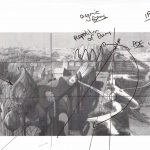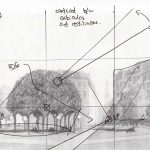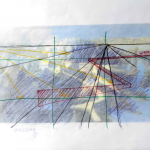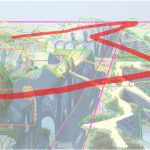introduction
This exercise uses tracing to quickly visually analyze the drawn work of another artist or designer. Tracing guides us to explicitly outline the compositional techniques of other designers, allowing for a deeper understanding of those techniques and, hopefully, how they may apply to our own work. The goal here is to become familiar enough with the various visual tools we encounter in the works of others that, after a time, we can begin to immediately recognize them without using tracing. This results in an ability to quickly analyze and critique works (including our own), learn from them efficiently, and effectively implement tools and techniques from others in our own work.
Desired outcomes: the art of critique
Methods: visual analysis
materials
- 3 landscape drawings/renders you would like to analyze, digital or printed (I used illustrations by the architect Luc Schuiten)
- (If printed) Trace paper, various drawing media
- (If digital) Adobe Photoshop, Autodesk Sketchbook, or similar
instructions
- For each of the images, use trace paper or digital software to trace on top
- On separate layers, analyze at minimum:
- Visual hierarchy (trace the path your eye follows in the image)
- location of major visual elements (grid)
- Shape and composition of major visual elements (massing)
- Perspective (1-point, 2-point, or 3 point perspective; location of vanishing points)
- Light and shadow (light source location, shadow trajectories)
- Any other techniques or elements you are interested in
reflection questions
- What application might this type of visual analysis have in your everyday design practice?
- Which analysis layers proved the most surprising? Revealing?
- Which techniques would you like to try in your own drawing?











